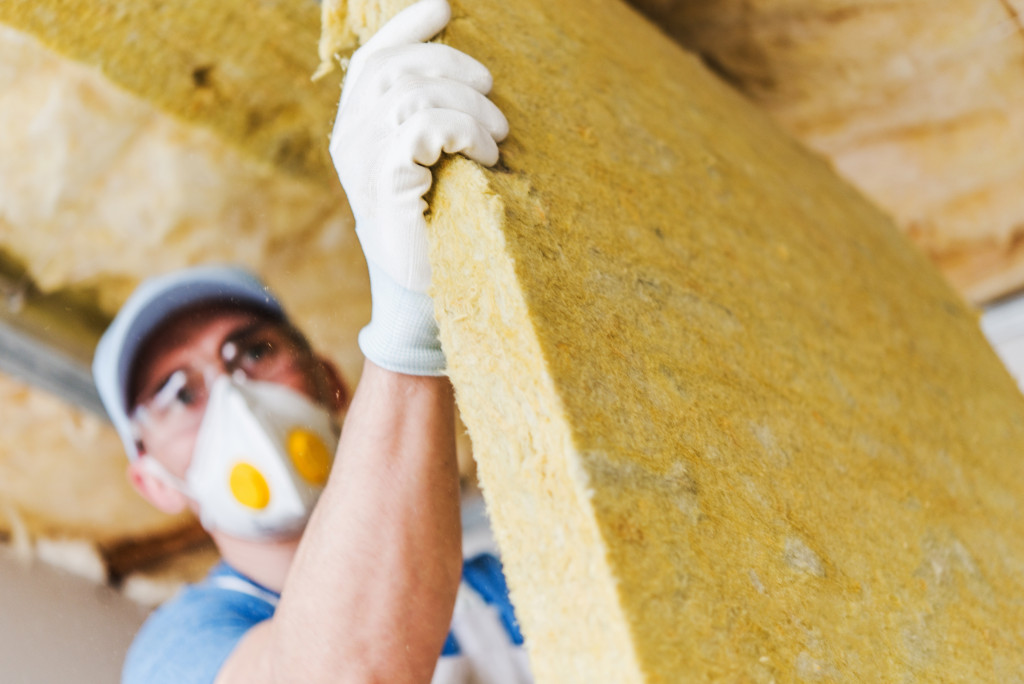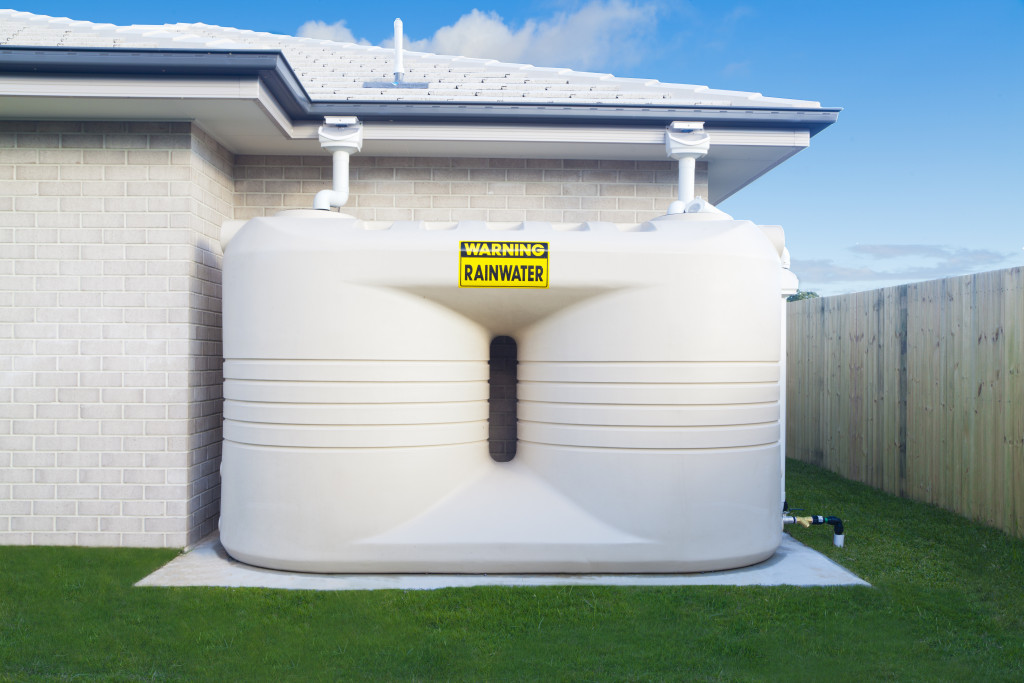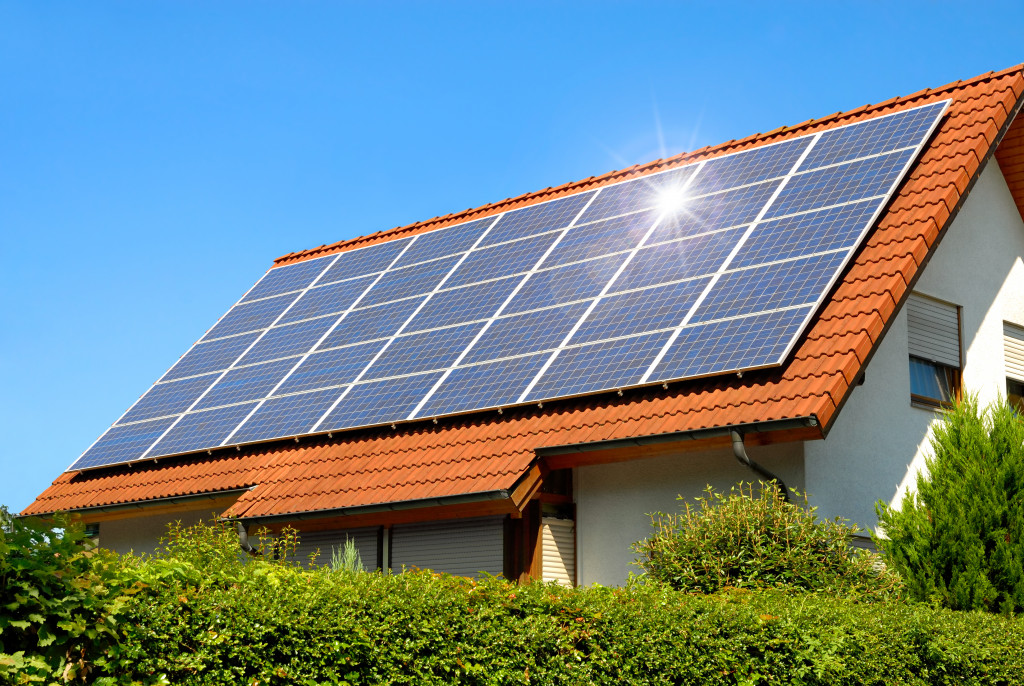• Insulating walls and attics can help reduce heat loss while also reducing bills.
• Installing solar panels is a great way to save money and use a renewable source of energy.
• Growing your own vegetables and fruits can provide you with fresh produce.
• Collecting rainwater and recycling materials are efficient, user-friendly, and cost-effective options.
• Use natural cleaning products for an easy-to-find deep cleaning solution that can help you save money.
If you want to go green and save money, check out these eco-friendly DIY projects for your home. From solar panels to water filtration, there are plenty of ways to make your home more sustainable — and stylish.
1. Insulate your walls and attic.
Today’s homeowners know that insulation is an integral part of creating a modern, energy-efficient home. Insulating walls and attics can help reduce heat loss during the winter months and keep your home at a cozy temperature—all while keeping bills down.
During the summer months, insulation can keep heat from entering your living space, ensuring your well-appointed home stays cool and comfortable. It’s also an easy DIY project that can be completed in a day.
To ensure that your insulation is installed correctly, read all the instructions before you begin. Many hardware stores offer classes specifically for DIY insulation projects, and they can be a great way to pick up tips from experienced pros.

2. Install solar panels to generate renewable energy.
Solar panel installation is the latest must-have for people to stay ahead of their peers and ensure their homes are running with modern efficiency. Not only will it make your home look sophisticated and contemporary, but you can save money on your power bills because solar panel systems require no fuel or other inputs to run than sunlight, making them a renewable source of energy.
Additionally, by using solar energy, you’re taking precautions to protect the planet. Using solar energy can reduce air pollution and help fight the effects of climate change.
Solar panel installation is a more advanced DIY project requiring research and planning before you start. A qualified electrician will be able to answer any questions you may have, so it’s best to consult one if you’re ever unsure.
3. Grow your own vegetables and fruits.
For those who are looking for a unique and tasteful addition to their backyard or rooftop — look no further than growing your own vegetables and fruits in a garden or window boxes. It will let you enjoy the pleasantness of seeing live plants around them and all the fresh produce from homegrown vegetables and fruits. Here are some ideas to try:
Start a vegetable garden with organic soil and compost.
Starting a vegetable garden with organic soil and compost can be an enjoyable and rewarding experience. Not only will you be able to enjoy the fruits of your labor (literally), but it’s also a great way to help the environment by cutting down on harmful pollutants and increasing biodiversity in your yard.
Plant herbs in an indoor window box.
If you don’t have much outdoor space, or if your climate isn’t conducive to growing vegetables and fruits, then an indoor window box is a great way to bring some greenery into the home. Planting herbs add flavor to your food but also can help purify the air in your home.
Try growing fruit trees outdoors.
If you have some outdoor space, planting fruit trees is a great way to reduce your grocery bill and enjoy the pleasure of eating freshly-picked fruit. Plus, harvesting and caring for a fruit tree will help teach children about gardening and responsible stewardship of the environment.
Build small raised beds for larger vegetables.
Raised beds are perfect for growing larger vegetables like tomatoes, squash, and cucumbers. These beds are easy to assemble and can be made from a variety of materials, including wood, metal, or plastic. Plus, they make it easier to maintain the soil around your plants since you won’t have to do as much digging or weeding.
4. Consider self-build oak buildings.
The trendiest have finally turned to durable self-build oak buildings for oak’s revered distinct beauty and longevity, making it the ideal choice for those who want an opulent way to express their success.
Oak’s classiness isn’t just limited to large buildings, though — smaller structures (such as sheds) can be just as stunning. It’s great to add a unique, luxurious touch to your outdoor space without breaking the bank.
Moreover, oak is a sustainable and eco-friendly choice of material, as it requires little energy to produce and can last for decades. You can even use oak wood in other parts of your home, such as kitchen countertops and furniture.
5. Collect rainwater in barrels.
For a way to stay green and save money, collecting rainwater in barrels is the perfect solution. It’s an efficient, user-friendly, and cost-effective option that can help you water your plants or wash your car.
Not only does it reduce reliance on non-renewable resources like tap water, but it also helps to cut down on technology costs associated with pumps and irrigation systems. So why not give it a try?
To start, you’ll need to purchase a rain barrel, which can be found at most home improvement stores or online. Once you have it all set up, you can start collecting and using the rainwater in no time.

6. Recycle materials around the house.
Nowadays, more and more are choosing to go sustainable. Recycling materials is a beautiful way to do this while also making your house look more trendy.
There are a variety of materials, from metal to plastic, that can be reused in simple DIY projects. For example, old t-shirts can be used as rugs for bathrooms, or old plates and jars can be painted as decorative centerpieces.
The possibilities for recycling around your home are genuinely endless! You can make changes without spending lots of money by creating something new out of something old.
Use natural cleaning products.
Everyone knows that keeping an attractive, clean home is a crucial ingredient of any fashionable lifestyle. Fortunately, maintaining a spotless abode doesn’t have to break the bank.
Natural cleaning products like diluted vinegar, baking soda, and lemon juice can be just as effective as their chemical-laden alternatives and cost only a fraction of the price. Not to mention, these items often have additional health and environmental benefits since they are free from toxic ingredients.
If you’re looking for easy-to-find supplies for deep cleaning your modern home, ditch the expensive store-brand cleaners and switch to natural cleaning instead.
Following these tips can make your home more sustainable and reduce your carbon footprint. Not to mention, many of these changes will also save you money in the long run. Consider insulating your walls and attic, installing solar panels, growing your own food, and using natural cleaning products. In time, you’ll see the rewards of your eco-friendly DIY projects.

